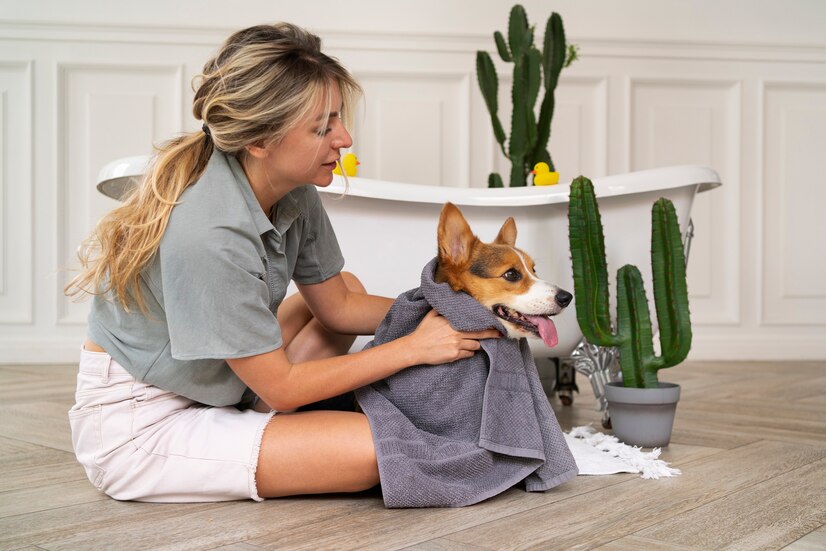Table of Contents:
- Identify Common Pet Emergencies
- Create a Pet First Aid Kit
- Understand Basic First Aid Procedures
- Keep Important Contact Information Handy
- Emergency Plans for Natural Disasters
- Maintain Regular Veterinary Visits
- Educate Yourself and Your Family
- Be Prepared and Stay Calm
Identify Common Pet Emergencies
Pet emergencies can occur anytime, and recognizing the signs is crucial. Typical emergencies include choking, poisoning, and severe injuries. Knowing the symptoms and acting promptly can often make a significant difference in outcomes. For instance, learning how to render initial aid before seeking emergency care for dogs Houston TX, is vital if your dog ingests a toxic substance.
A quick response can indeed save your pet’s life. It’s essential to remain calm and assess the situation carefully. For example, knowing how to perform the Heimlich maneuver for animals can be life-saving if your pet is choking. If your pet shows poisoning symptoms, such as excessive drooling, vomiting, or seizures, administering immediate first aid and contacting a veterinarian can prevent further complications. This proactive approach ensures that pets get the care they need when it matters most.
Create a Pet First Aid Kit
A well-stocked pet first aid kit is essential. Include items like bandages, antiseptics, tweezers, and a pet-friendly thermometer. Tailoring your first aid kit to your pet’s needs can also benefit.
Consider adding gauze pads, adhesive tape, scissors, a digital rectal thermometer, and a blanket. These items can address common issues like cuts, hypothermia, or even shock situations. Regularly check your kit and replace any expired items to ensure they are always ready when needed. Having a blanket can be particularly useful to keep your pet warm if they’re in shock, and gauze pads are essential for stemming bleeding from cuts or wounds until you can get professional help. Tweezers help remove splinters or ticks, and an antiseptic solution can help clean minor wounds, preventing infection.
Understand Basic First Aid Procedures
Knowing how to perform basic first aid on pets can save lives. Techniques such as CPR for pets and how to treat wounds are essential skills. Some provide comprehensive guides on these procedures. It’s necessary to take the time to familiarize yourself with these techniques before an emergency arises.
Practicing these skills occasionally ensures that you and other household members are prepared. Many local community centers and pet stores offer pet first aid courses and workshops. Taking one of these classes can significantly improve your confidence and skills in handling emergencies. Performing CPR on a pet involves techniques different from human CPR, such as positioning and breathing rates, so learning from a qualified instructor can be particularly beneficial. Properly cleaning and bandaging wounds can prevent infections and further complications until your pet receives professional care.
Keep Important Contact Information Handy
Always have contact details for your veterinarian, local emergency animal hospitals, and poison control centers accessible. Access to these numbers can expedite getting your pet’s help during a crisis. Store these contacts in your phone, refrigerator, and your pet’s first aid kit for easy access.
Being prepared with this information can help avoid wasting precious time during an emergency. Ensure that anyone caring for your pet, such as a pet sitter, can access these emergency contacts. Investing in a pet emergency card you carry at all times can also be helpful. This card would list all the essential contact numbers, making it easily accessible if you are not at home. Also, consider having a backup vet or emergency hotline if your primary contact is unavailable.
Emergency Plans for Natural Disasters
Natural disasters require specific preparation. Create an emergency plan that includes your pet, such as evacuation routes and safe shelters. Ensure you have enough supplies to last at least a few days. The guidelines on emergency preparedness for pets can be an excellent resource for planning.
Make a checklist of essential items to pack quickly, including food, water, medications, and comfort items like blankets and toys. Also, always keep a recent photo of your pet and copies of medical records if you are separated. Preparing a “go-bag” that contains all these necessities can make a significant difference during evacuations. Include collapsible bowls for food and water, a leash, and waste bags. Knowing pet-friendly shelters in advance or having a list of hotels that accept pets will ensure you have a safe space for your furry friend.
Maintain Regular Veterinary Visits
Regular check-ups with your vet are essential for keeping your pet in good health and avoiding emergencies. Preventive care can identify potential health issues before they become more serious. Annual or bi-annual exams can catch conditions early, making them more accessible (and often less costly) to treat.
Discuss any unusual behaviors or symptoms with your vet during these visits. Open communication with your vet fosters a proactive approach to your pet’s health, potentially preventing many common emergencies. Regular blood tests, dental check-ups, and vaccinations are crucial to preventive care. Keeping an updated record of your pet’s health, including past illnesses and treatments, will help your vet provide the best care possible.
Educate Yourself and Your Family
Ensure everyone in your household knows the basics of pet first aid and emergency response. This ensures that any family member can act quickly and effectively in an emergency. Consider holding a family meeting to review the essential steps and practice scenarios together.
Education should extend to recognizing signs of common pet ailments and understanding when to seek immediate help. The more your family knows, the more efficiently you can respond to emergencies as a team. Create a pet emergency plan that includes roles for each family member, such as who will gather the pet first aid kit and who will contact the vet. Rehearsing this plan regularly ensures everyone is prepared and confident in their roles during an actual emergency.
Be Prepared and Stay Calm
Preparation is critical to managing pet emergencies. Always stay calm and think clearly to handle the situation effectively. Training and preparedness can make a significant difference when faced with an emergency. Remember, your pet can sense your anxiety, so maintaining composure helps calm them, too.
In conclusion, a little preparation can go a long way in ensuring the safety and well-being of your pet during emergencies. From knowing basic first aid to having a ready first aid kit and emergency contacts, these steps help create a safer environment for your furry friends. Involving everyone in the household in emergency planning and education further enhances this preparedness. Ultimately, staying calm and collected in an emergency will help you make swift and effective decisions, giving your pet the best chance for a positive outcome.







